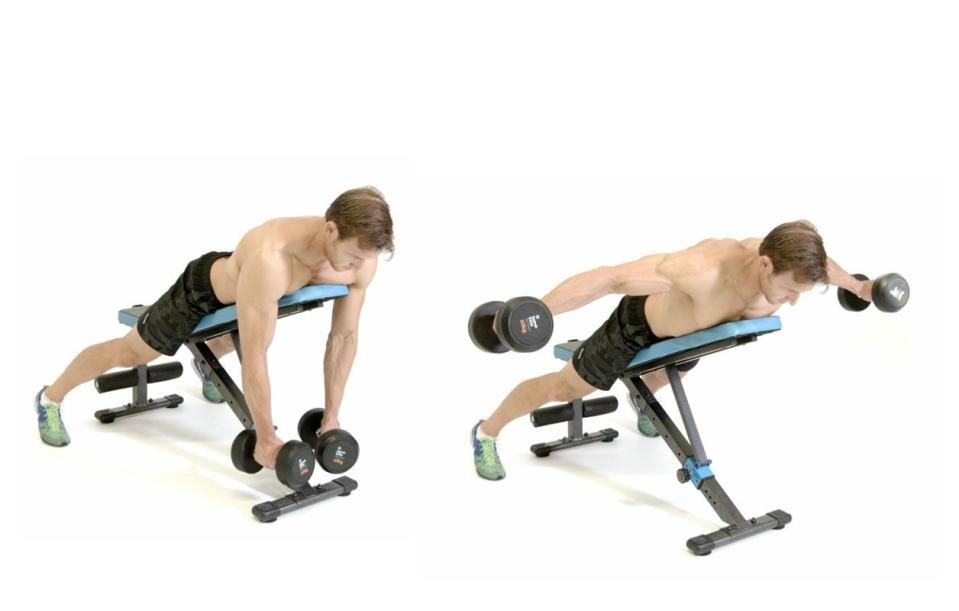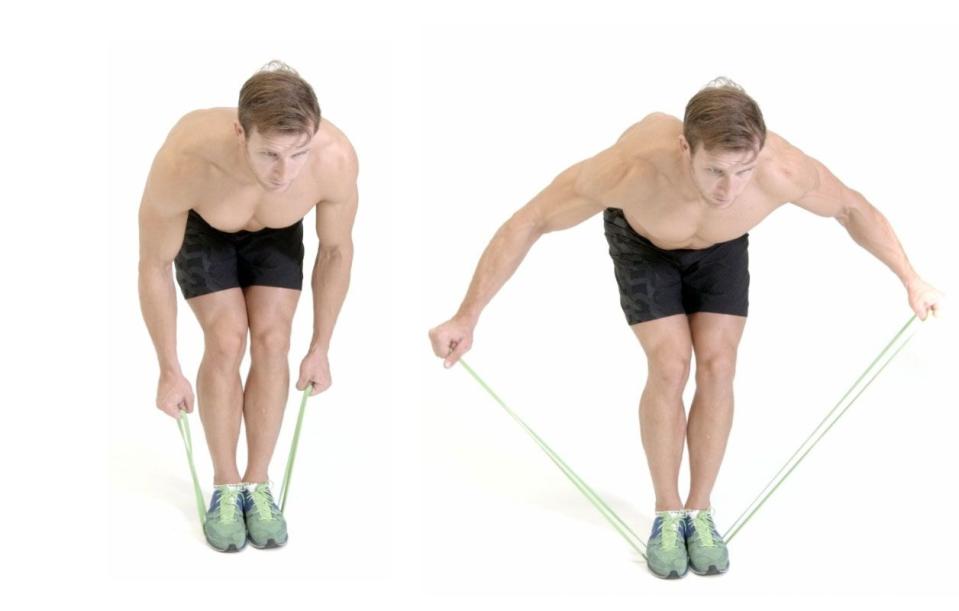How to Do the Lying Rear Delt Fly for Bigger, Healthier Shoulders
One of the unsung heroes of dumbbell exercises, the lying rear delt fly not only strengthens your shoulder muscles but also helps prevent shoulder injuries. Mastering this exercise will bolster your upper back and posterior deltoids, providing significant carryover benefits for pulling and overhead pressing movements. By targeting the often-overlooked rotator cuff muscles, exercises like the lying rear delt fly will keep you on track for hitting personal bests, free from shoulder discomfort
Sound interesting? Follow our guide on how to do the lying rear delt fly with form breakdowns, explanations of the muscles worked, exercise variations and all those muscle-building benefits.
What Muscles Does The Lying Rear Delt Fly Work?

The lying rear delt fly works:
Posterior deltoids: The rear delts are primarily targeted and responsible for shoulder extension and external rotation.
Rhomboids: Located between your shoulder blades, these muscles help retract the scapula.
Trapezius: The traps assist in scapular stabilisation and movement during the fly.
Infraspinatus: Part of the rotator cuff, these muscles assist with external rotation and stabilisation.
Teres minor: Another rotator cuff muscle that helps with external rotation and stabilisation.
Are Lying Rear Delt Flys Effective?
Lying rear delt flys have several benefits, such as:
Building muscle mass
If your goal is to develop bigger, more defined shoulders, this exercise ensures even muscle growth across the entire deltoid. It complements other frequently performed movements, like the incline chest press, which primarily target the front deltoids, by focusing on the often-neglected rear portion for a well-rounded shoulder development.
Evening out strength disparities
Because we have ample opportunity to hit the front deltoids in our chest workouts, we can often neglect the rear muscles. By including lying rear delt flys, you'll focus on those often forgotten about muscles and also even out strength disparities between your anterior muscles – and also between your limbs.

Carryover to pulling and overhead pressing moves
Your rear delts will come in handy for pulling moves such as heavy bent-over rows. When completing exercises like the strict press, we require significant total shoulder strength and stability – research published in the Journal of Human Kinetics even highlights the importance of the rear deltoids. Without building this strength, we may be setting ourselves up for injuries. By incorporating exercises such as the lying rear delt fly, we can strengthen the rear deltoids and the smaller muscles in the upper back, ensuring we are ready to press heavier weights overhead
Less momentum
As opposed to traditional rear delt flys where we complete the move standing, the lying variation will take all momentum out of the equation — no swinging or cheating allowed. Therefore, increasing your probability of gaining muscle through a full range of motion.
What Bench Angle Is Best for Lying Rear Delt Flys?
For incline rear delt flys, it's best to set the bench angle to a fairly low angle – lower than you would for exercises like incline dumbbell presses (lower than 45-degrees). For a bench at a slight angle like this, you will hit the rear deltoids and traps more. For a flat bench on the other hand, typically used during the lying rear delt fly, you will hit the rhomboids, infraspinatus and teres major muscles more.
How to Do the Lying Rear Delt Fly


Lie chest facing down, on a flat or incline bench (depending on which muscles you want to target more) with your arms hanging at full stretch, holding a dumbbell in each hand.
Without moving your torso, raise the dumbbells up and away from your body in a fixed arc, keeping a slight bend in your elbows.
Squeeze your shoulder blades together at the top of each rep before slowly lowering the dumbbells back down to a hang and repeating.
Lying Rear Delt Fly Variations
If you've nailed the lying rear delt fly, try these variations:

Bent-over rear delt fly
Hold a pair of dumbbells at your sides and hinge at the hips until your torso is parallel to the ground. Without moving your torso, raise the dumbbells up and laterally away from your body in a fixed arc, keeping a slight bend in your elbows. Squeeze your shoulder blades together at the top of each rep, before slowly lowering the dumbbells back down to a hang and repeating.

Seated rear delt fly
Sit on the edge of a bench holding a dumbbell in each hand at your sides. Lean forward as far as possible until your chest is touching your thighs. Without moving your torso, raise the dumbbells up and away from your body in a fixed arc, keeping a slight bend in your elbows. Squeeze your shoulder blades together at the top of each rep, before slowly lowering the dumbbells back down to a hang and repeating.

Resistance band rear delt fly
Hold a resistance band in each hand, looped under your feet, and hinge at the hips until your torso is parallel to the ground. Without moving your torso, raise your arms up and laterally away from your body in a fixed arc, keeping a slight bend in your elbows. Squeeze your shoulder blades together at the top of each repetition before slowly lowering your arms back down to a hang and repeating.
You Might Also Like


